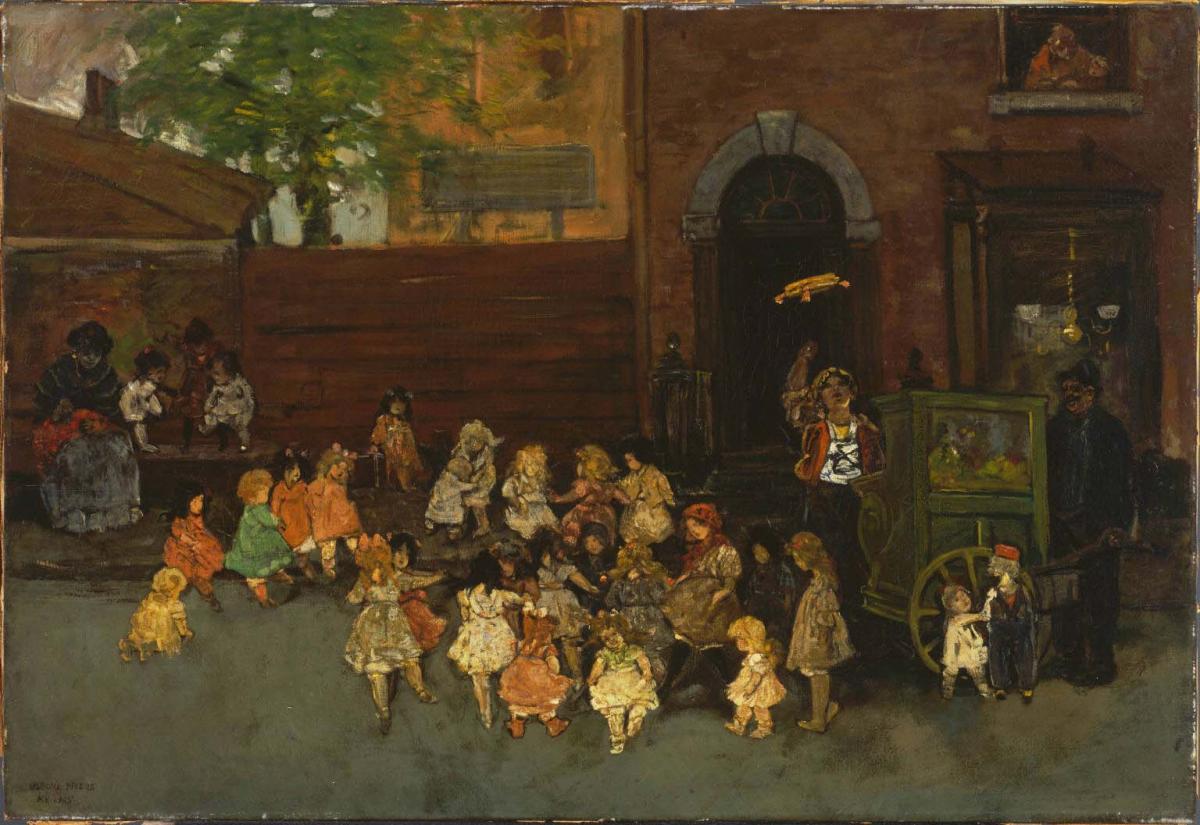The Tambourine
Jerome Myers ( 1905 )

Music provided an escape from the dingy environment of tenement life for the inhabitants of New York’s lower east side. When the hurdy-gurdy man played selections from Rigoletto and Il Trovatore—as portrayed in The Tambourine—the children’s imaginations transported them, Myers wrote, “from the East Side streets to scenes at the Metropolitan Opera House.”
The Tambourine, painted in 1905, is set on a shallow foreground abruptly cut off by a backdrop created by a high wooden fence and red-brick building, demonstrating his apt ability to paint crowds. He also used stock situations that connoted lower class life: gypsies performing, mother and child leaning out a window, children dancing in the street—all aspects of city life unfamiliar to the bourgeoisie. Myers has painted the figures with their torsos parallel to the picture plane, creating a closed, intimate environment. And at least two figures engage the viewer: the delicate child in the lower center of the painting who appears to kick up her heels for the onlooker, and the child leaning against the fence in the back who seems to stare inquisitively out of the picture.
In 1942, Phillips purchased The Tambourine, exclaiming, “This does seem to be his masterpiece and I cannot resist it.” Phillips already knew of the painting a quarter of a century earlier when it was in the private collection of James Speyer. Phillips cited it in an article to illustrate the artist’s enthusiasm in portraying children, noting how the painting depicts “children…dancing to the magic music of a hand-organ. Round and round they go, swinging each other, and the swarthy grinder of tunes grins his satisfaction, while ‘the good wife [throws] her tambourine into the sky.’” Indeed, in this work, Phillips notes that Myers has revealed his love of childhood, “especially exuberant childishness under no well-bred restraint.”